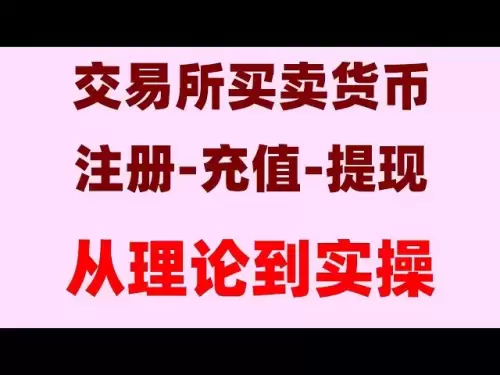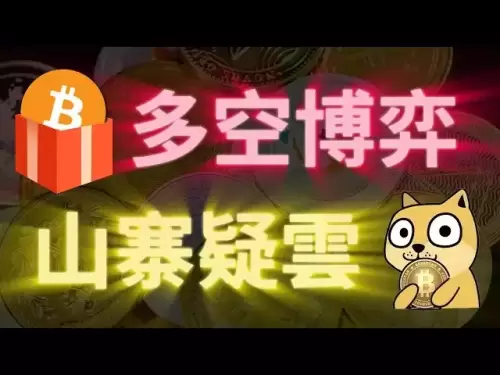 |
|
 |
|
 |
|
 |
|
 |
|
 |
|
 |
|
 |
|
 |
|
 |
|
 |
|
 |
|
 |
|
 |
|
 |
|
Cryptocurrency News Articles
Bitget Expands Its USDT Support by Listing the Token on Kaia Network
May 19, 2025 at 02:48 pm
The digital asset sector is providing another leap forward in the area of financial innovation. Bitget, one of the world's leading crypto exchanges,

Bitget, one of the world’s leading cryptocurrency exchanges, announced full support for Tether’s USDT on Kaia, the next generation of stablecoin payments platform, is now available for seamless fiat (stablecoin) payments.
This integration marks a major milestone for both Bitget and Kaia, and it will play a crucial role in expanding the use cases of stablecoins in the global financial landscape.
Bitget is one of the most widely adopted stablecoins on another Layer 1 blockchain. For those who prefer reliable, fast, cheap, and secure transactions, this is definitely good news.
Let’s delve into the details of why this is important, how it works, and what this might mean for the future of finance on a global scale.
What Is the Kaia Network and Why Is It Gaining Attention?
The Kaia network is a high-performance Layer 1 blockchain designed to deliver scalability, interoperability, and user-friendly decentralized solutions.
Designed with speed and cost-efficiency in mind, it has attracted the attention of developers and users alike for its streamlined architecture and innovative ecosystem. Its structure allows for seamless decentralized finance (DeFi) applications, cross-chain communication, and rapid settlement of transactions.
Bringing Bitget integration into the picture, they are taking a solid step toward becoming a more accessible and widely adopted chain.
The addition of USDT on Kaia is a game-changer for users who want to move funds without the high gas fees or long wait times encountered on other networks. It combines Kaia’s technical performance with the popularity and stability of Tether’s USD-pegged token.
Why Is Bitget’s Support for USDT on Kaia a Big Deal?
Bitget integration marks a major milestone for Kaia and a clear validation of its growing relevance in the crypto ecosystem.
Bitget’s role as one of the world’s fastest-growing centralized exchanges will bring more exposure, liquidity, and usage for Kaia-based assets.
With USDT on Kaia now live on Bitget, users can now enjoy faster transaction speeds and significantly lower costs when transferring stablecoins across borders. This is especially beneficial for those involved in remittances, e-commerce, or simply trying to avoid the volatility of other crypto assets.
More importantly, this move also supports financial inclusion. With lower entry barriers and improved transaction efficiency, everyday users and businesses in emerging markets can now leverage stablecoins like never before.
How Does USDT on Kaia Improve the Cross-Border Transaction Experience?
Traditional cross-border transfers are often slow and expensive. Even in the crypto world, users encounter challenges with high gas fees on congested networks like Ethereum.
By introducing USDT on Kaia, both speed and affordability are addressed without sacrificing security or scalability. Kaia’s architecture makes it easier to move funds instantly, and USDT brings a level of trust and stability to those funds.
Combine that with Bitget integration, and users now have a robust, real-world solution to age-old payment problems. Use cases can range from freelancers getting paid in stablecoins to businesses handling international settlements. The flexibility and cost-effectiveness of this integration will likely drive wider adoption.
What Might This Mean for the Future of Stablecoin Adoption?
This partnership between Bitget and Kaia is more than just a technical enhancement, it’s a shift in how the crypto world views usability and adoption.
As USDT on Kaia becomes more widespread, we can expect increased traction in real-world applications, especially in countries where stablecoins offer a better alternative to volatile fiat currencies.
We might also see developers building more tools, wallets, and dApps that incorporate Kaia’s infrastructure, powered by the utility and stability of USDT. This could eventually lead to a more vibrant ecosystem that fuels both individual and institutional use cases.
The success of this integration may also push other exchanges and networks to follow suit, creating a domino effect of improvements in crypto usability across the board.
USDT on Kaia via Bitget is the future of borderless finance. The partnership between Bitget and the Kaia network marks a significant step in solving real-world financial challenges.
With USDT on Kaia now available on Bitget, users can experience faster, cheaper, and more reliable transactions as they transfer funds across the globe.
This move sets a new benchmark for how stablecoins should function in the modern digital economy.
Whether you’re a trader, a business owner, or someone looking to explore global financial tools, this integration opens up new opportunities to participate in a more efficient system.
As stablecoin adoption continues to rise and blockchain technology matures, we can anticipate more such partnerships that bring the benefits of cryptocurrency closer to daily life.
Disclaimer:info@kdj.com
The information provided is not trading advice. kdj.com does not assume any responsibility for any investments made based on the information provided in this article. Cryptocurrencies are highly volatile and it is highly recommended that you invest with caution after thorough research!
If you believe that the content used on this website infringes your copyright, please contact us immediately (info@kdj.com) and we will delete it promptly.
-

-

- Token Gating: The New Era of Digital Content Access
- May 19, 2025 at 08:30 pm
- In the new era of the internet, digital content access is an asset. From concerts online and web lessons to forums and in-app premium content, more and more people wish to restrict access to specific content or experiences to specific users. Historically, it has been controlled by passwords, paywalls, or subscriptions. With the development of blockchain, however, a new paradigm has opened up—token gating.
-

-

-

-

-

-

-





























































